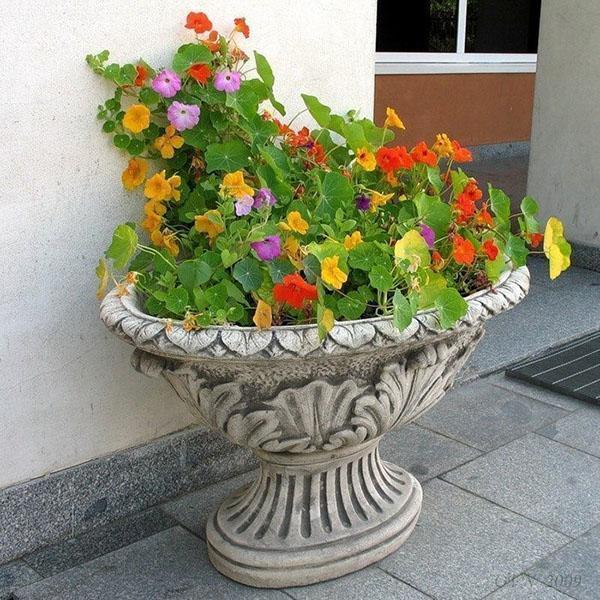Useful properties of nasturtium, its cultivation in pots or vases
 Nasturtium, or as this plant is also called, "capuchin" is a very unpretentious flower. The word "Capuchin" is translated into Russian as "Hood". The flower received this name because of the shape of its buds.
Nasturtium, or as this plant is also called, "capuchin" is a very unpretentious flower. The word "Capuchin" is translated into Russian as "Hood". The flower received this name because of the shape of its buds.
There are over 70 varieties of nasturtium. Depending on the variety, capuchin buds can be red, orange, yellow or purple. A variety of colors makes nasturtium a good decoration for a flower bed, but the decorative qualities of capuchin have a number of useful and medicinal properties. It is possible to grow nasturtium varieties specially bred for human consumption in the garden. Capuchin contains a large amount of essential oils, so its flowers are used in folk medicine.
The use of nasturtium in cooking
Nasturtium is almost completely edible. Only the roots of the plant should not be eaten. The flower leaves are used in salads and snacks in Indian cuisine. Aromatic tea is brewed from stems and flowers. The seeds of nasturtium are dried and crushed, they produce a very tasty spice, which is used in the preparation of Spanish, Portuguese and Italian cuisine. Nasturtium flowers have a sweetish taste, so they can be used to decorate pastries or added to cream.
Nasturtium as medicine
Capuchin is used in folk medicine as a medicine for colds and viral diseases. The buds of nasturtium contain a large amount of vitamins E, C and A, which increase human immunity. Compresses are prepared from the roots that help to cope with joint pains, as well as skin rashes. Tea is prepared from the stalks of nasturtium, which has a diuretic effect, and it also helps to remove stones from the kidneys.
Growing nasturtium in pots
Nasturtium can be grown in a greenhouse or indoors. For this, the capuchin is planted in pots. The advantage of growing this way is that the nasturtium will bloom for longer. She will be able to endure the frost and enter the flowering period next year.
Nasturtium is susceptible to fungal and viral diseases. If a white bloom appears on the capuchin leaves from below, such a plant must be removed. Gray rot is a viral disease that can destroy all flowers in pots.
If you notice that the leaves of the flower have begun to turn yellow and curl, remove them, and treat the plant with Fitosporin.